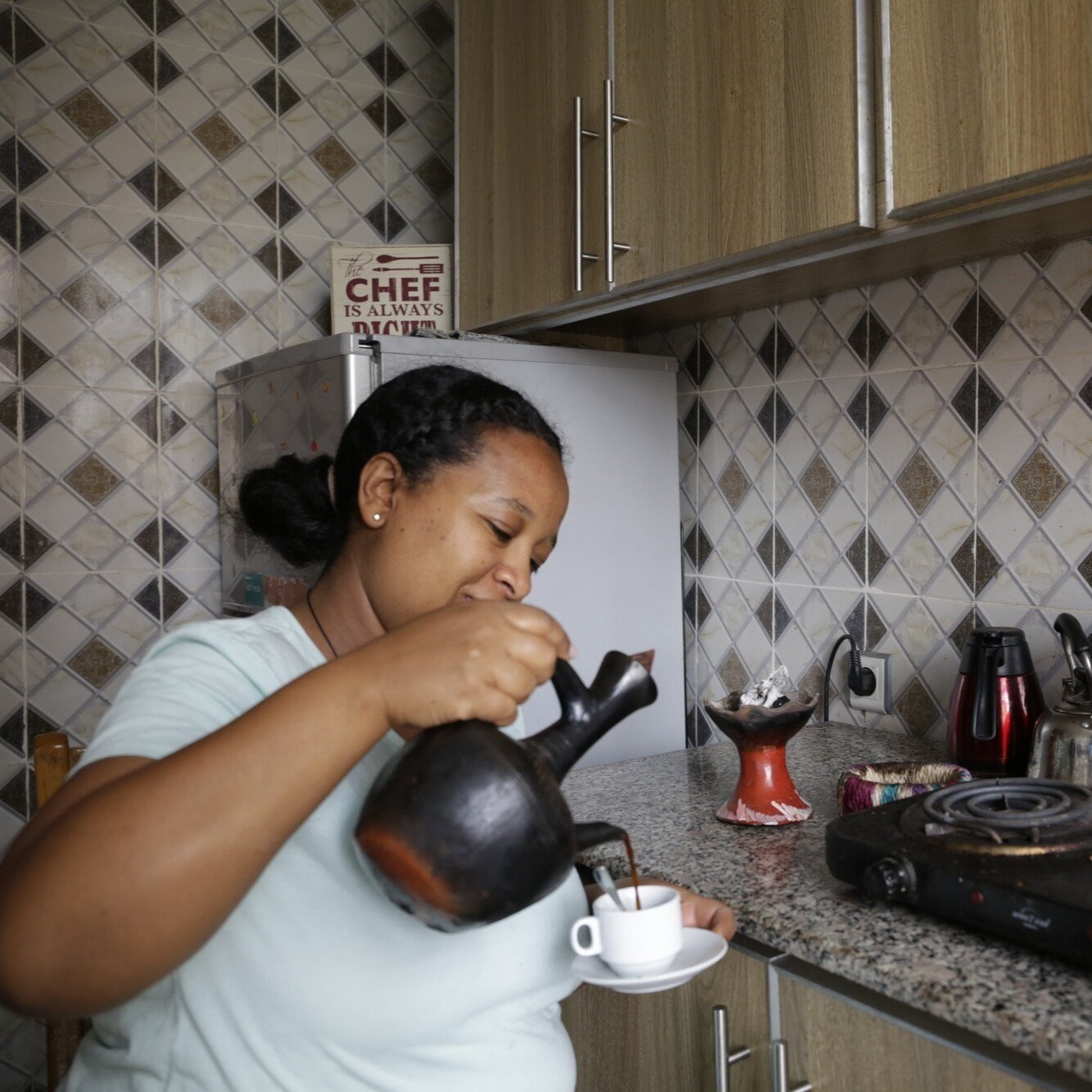Coffee is the most popular drink in the world with around two billion cups consumed every single day. The way it's prepared and served in different countries and cultures varies massively, but the role it plays remains the same: to bring people together.
This blog series will delve into the culture of coffee in each of the countries we work in. As Ethiopia is the birthplace of coffee and where we completed our most recent project, let's start there.
Many experts consider Ethiopia the birthplace of coffee and it may be the only place in the world where coffee is actually a native plant.
The legend goes that a goat herder named Kaldi discovered coffee after witnessing the intense energy the goats received from eating the cherries. He brought the cherries to the monastery to share with the monks, who quickly declared them the devil's work and hurled them into the fire. However, the monks changed their minds after smelling the aroma of the beans roasting. They placed the beans in a jug with hot water to preserve them. Later, the monks drank the brew. It's said that the drink helped the monks stay awake during nightly devotions.
While we may never know if the legend is true, one thing is for sure, without Ethiopia, mornings would be quite different.
Storytelling is a significant part of Ethiopian culture and has been passed down through the generations. Artist Marco Cosentino’s drawing of the traditional jebena portrays the incredible history and culture of the Ethiopian people, along with their love of the humble coffee plant.
Coffee isn't just Ethiopia's national drink: it plays a significant part in the country's culture. The traditional coffee ceremony Jebena buna has acknowledged Ethiopia's unique relationship with coffee. The experience is supposed to open the senses to undergo a type of spiritual awakening.
Deemed the most important social connection, the ceremony lasts 2-3 hours. An invitation to a coffee ceremony is a mark of friendship and respect. The careful preparation and roasting of the beans portray the importance of the ceremony. Once the beans are washed and roasted, the mitad is taken to the guests so they can inhale the aroma. The beans are then brewed in a traditional mortar before putting them into a jebena; a clay pot used explicitly for preparing coffee beans.
Once the coffee is made, it's left to steep. The coffee can be poured when all the cups are gathered on the coffee table. However, the first cup poured is not for consumption but for inspecting the colouring of the brew. After this careful preparation, the drinking ceremony begins with coffee being offered with multiple seasonings like salt, sugar, and rue.
What makes this coffee ceremony unique is the harmony around the gathering, from the careful preparation and appreciation of the beans to the connection towards spirituality. Participants in the ceremony must drink at least three cups of coffee. It's not only considered rude, but Ethiopians believe that participants’ souls transform when all three rounds are completed.
Watch WaterAid’s Communications Officer Frehiwot make traditional Ethiopian coffee here:



![Ethiopia_vessel[1].png](https://images.squarespace-cdn.com/content/v1/564dcd00e4b0ea20b1f82cad/1658758348494-U51O9HXH79JPCT6AAQ5G/Ethiopia_vessel%5B1%5D.png)
